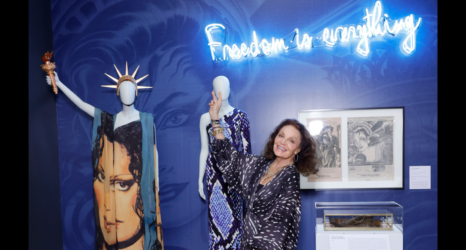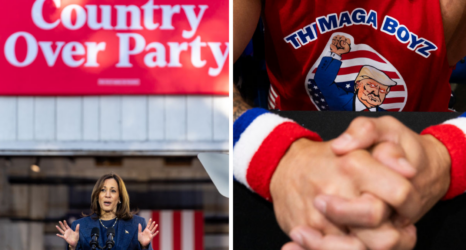In these eye-opening (for some) and unsurprising (for others) days following the recent tsunami of assault and harassment allegations, many are now voicing concern about a potential slippery slope where misplaced erotic fumblings become conflated with assault and workplace harassment.
It’s a reasonable worry with much historical precedent: From trumped up hysteria over Satanic daycare center child abuse rings to the demonizing of gay male sexuality around AIDS and the voluminous sex registries that serve as a modern-day leper colonies, our society has long deflected sexual and gender conundrums onto moral dictums and crusades. But just as we must believe that most men actually understand that masturbating in front of a colleague in a workplace is both wrong and abusive, we must believe that most women understand the difference between the single inappropriate hug or a random sexual joke and rape and harassment.
It is vital to recognize that smaller, less violative, everyday acts of male prerogative contribute to a broader cultural environment that does—across the globe—allow the abuse of women to go unchecked. It is also the case that isolated and more inconsequential acts by men toward women are not co-equal with what we may call assault or harassment.
Here’s the challenge: We must heed both of these truths.
For the vast majority of the accused men currently on display, the claims against them are both substantive and believable. Backed up by years of industry collusion and cultural disregard for women’s rights, the Harvey Weinsteins and Louis CKs and Roy Moores of the world are not innocent and misunderstood dudes who were merely awkward in their pursuit of pleasure—they are men who were known to systematically harass and abuse women. This is precisely what feminist activists and scholars mean when we talk about a “rape culture”—a pervasive environment in which women are seen as objects to be used, and violence against their bodies is commonplace and normalized.
Feminist and critical race scholars have been writing for decades about how everyday acts, or micro-aggressions, from cat calling to racial hair touching, add up to make marginalized people feel even more vulnerable and contribute to larger vectors of institutional power. We’re both so used to everyday abuse and the fear of worse that, as Rebecca Traister argues:
“…the rage that many of us are feeling doesn’t necessarily correspond with the severity of the trespass: Lots of us are on some level as incensed about the guy who looked down our shirt at a company retreat as we are about Weinstein… Part of it is the decades we’ve spent being pressured to underreact, our objections to the small stuff (and also to the big stuff!) bantered away, ignored, or attributed to our own lily-livered inability to cut it in the real world. Resentments accrete, mature into rage.”
These “small” acts are not, therefore, benign or inconsequential. But they are also not synonymous with assault. A cat call is not a rape. Al Franken’s hand on a butt during a state fair photoshoot is not equivalent to the systematic trolling of underage girls by Roy Moore or decades of quid-pro-quo workplace assaults by Harvey Weinstein.
In the campus context, these same issues play out in troubling ways. After decades and decades of sweeping sexual assault under the rug, activists and a progressive President engaged numerous strategies to create a less woman-hostile campus climate. Under the Obama administration, affirmative consent legislation—making “yes means yes” the rule of thubm, and retiring the outdated “no means no” model for sexual violence—made its way to law. The Education Department’s guidance on campus sexual assault mandated accountability and victim rights. The right reacted predictably—but, like our current discussion around workplace harassment, there is also push-back from the left and from feminists worried about increasing carceral over-reach, dangerous conflations and racial bias in campus adjudications.
This is another hard to thread needle—because campus assault is real, has historically been ignored or re-victimized the victims, and the porn-fed culture of objectification has damaging effects on women throughout a lifetime. At the same time, when we hear of cases of a misapprehended look or an errant hand or a wayward touch being treated as actionable crimes, we are indeed required to think hard about distinctions and easy conflations.
Most feminists would undoubtedly argue for the importance of delineating the substantive differences between assault, harassment, unwanted attention or pursuit. As Wendy Kaminer says: “You can believe that workplace harassment and sexual violence generally are persistent problems, especially but not exclusively for women, and still resist accepting every allegation as true and potentially or necessarily traumatic. You can wonder about a culture in which an unsolicited or unwelcome human touch can be so easily pathologized.” True enough, and conflations typically come back to bite the victims in the form of sexist backlash. We’re seeing this already, as poor befuddled white-collar men worry about how their behavior in the office may be misconstrued and Senate candidates rail against a “witch-hunt” by none other than Rush Limbaugh’s phantasmic “feminazis.” Indeed, the defense of Roy Moore by a sizable portion of the population and the fact that he still has a chance of winning the Alabama special election points to the potency of post-Trump anti-feminist backlash.
This backlash can and does take many forms, including a left-wing fear of a “sex panic” and the more obvious conservative claim that hordes of men will be unjustly accused and face unwarranted consequences for bad behavior. But progressives should abjure this language of witch hunt—used without irony by none other than Woody Allen.
“To invoke the witch hunt narrative,” Stassa Edwards argues in Jezebel, “is to reaffirm that power rather than to grapple with the widespread abuses that have been dismissed or simply treated as the price of doing business.” Indeed, we’ve barely begun this conversation and yet, as Rebecca Traister notes, it “is shifting so swiftly to the harm being done to men.” She explains:
They’re losing their jobs. Their reputations are being damaged. But, in part, the focus on the immediate punishment and the immediate announcement of consequence means that we wind up talking more about the harm being done to the accused than the systematic and structural harm that’s clearly been done to the women who are making the allegations.
A hand on a butt is not a rape, but it is—arguably—part of the drip, drip, drip that contributes to rape culture. It is precisely the realization of this connection that has prompted such unusual soul-searching in the press, with feminists such as Michelle Goldberg and Kate Harding struggling to get a handle on how to respond to the acts of an ally such as Franken—understanding both the pragmatics of party politics and the complications of ignoring one more drop.
While we should be vigilant in avoiding both a blurring of varied experiences and the inevitable backlash against feminist truth-telling, it is critical to keep some facts in mind: Women of every age and every ethnicity and every class and every sexual orientation have been consistently subject to a wide range of abusive and objectifying and harassing and, yes, violent behavior by men in every sphere of our lives. And, by and large, those men have gotten away with it. They got away with it long before Clarence Thomas was named as a harasser by Anita Hill and they got away with it for too long after.
The heartbreaking and inspiring #MeToo hashtag was a way to speak truth to power and join forces and come out of the shadows—again—but it also made men and male power accountable. “Patriarchy kills off stories and women to maintain its power,” Rebecca Solnit wrote. “If you’re a woman, this stuff shapes you; it scars you, it tells you you are worthless, no one, voiceless, that this is not a world in which you are safe or equal or free.”
It does seem curious—and my feminist antenna goes up—that the rush to scream sex panic happens at the precise moment when we may actually see some men held accountable for abusive behavior, when women’s long-silenced voices burst forth and the media spends more than a nanosecond on endemic male violence.
Caitlin Flanagan, writing in The Atlantic, claims that raising the siren of sex panic “is the 2017 way of calling women frigid.”
In the 1950s, the woman who slapped a man’s face for an unwanted grope was mocked for not being sexually open, for being uptight. Now she’s accused of participating in a “sex panic.” But it’s all the same thing across the generations: When women stand up to say “keep your hands off of me” there’s a good chance they’ll be called prudes. Saying there’s a sex panic is a fancy way of saying that women’s bodies don’t completely belong to them the way their cars do. Someone can damage a woman’s car in a very small way, and insurance companies take it seriously and pay for the repair. She owns that car, and has every right to protect it. But if someone grabs her butt without her permission, she needs to lighten up. What is she, a frigid bitch?
When we have leftier-than-thou mansplaining by William Kaufman over at Counterpunch, dismissing all this “masscult fixation” as “an avalanche of aggrieved, undifferentiated accusation—a stampeding herd of ‘Me-Tooists,’” it is hard indeed to dispute Flanagan’s observation. For righteous dudes like Kaufman and sadly many others of a supposedly progressive ilk, these acts are just “erotic peccadillos” and “impetuous volcanic eruptions of erotic passion” imperiling the good work of leftie men out to make the world safe for, well, them.
Because, really, this is not a sex panic. When we think, for example, of the panic around (supposed) satanic sex abuse in preschools and daycares, we should remember that people were jailed, massive falsehoods were promulgated—truly innocent lives were destroyed. There was no there there. But there is very much a there here.
Sexual harassment and assault are not ghostly apparitions, but grindingly everyday actions taken by countless men—in every workplace and city, street and country road, with real and profound effects on all women. There is ample evidence that most, if not all, of the men publicly accused as of late have in fact done these things, and indeed many have admitted as much. For all those who worry about sex panics, I urge you to sit with the realities of overweening male violence the world over. Let the data sink in. For those who worry about sexual assault, I suggest that we all have the capacity to make distinctions and that—in life and law—nuance matters.
Not only do we need to insist on nuance and scale, but we must insist on a structural and institutional analysis of male predation. Just as sociologist Lisa Wade has argued regarding frats and campus rape culture—e.g. get rid of them and hugely reduce sexual assault—feminists must argue intersectionally, analyzing the relationship between sexual violence, racial animus, heteronormativity and predatory capitalism.
Behind every #MeToo is a hope for #NotHer. Not another woman, another sister, another daughter, another mother. No doubt there is danger of over-reach and conflation. But I, for one, am willing to court that danger if there is some chance that the ongoing (patriarchal) panic that is life for most women in a world of unbridled masculine aggression is lessened. Even a bit.





